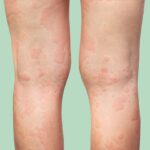If you often experience symptoms like coughing, wheezing, or chest tightness during or after you exercise, you may have exercise-induced bronchoconstriction, or EIB. This condition was once more commonly known as exercise-induced asthma (EIA), though this older terminology incorrectly suggests that exercise can cause asthma.e60dc2a1-f33c-4a05-9b50-8e3e8e5976299ae9d2ca-c5dc-44ca-9fb0-f9bcf695c879 While EIB most often affects people with chronic asthma (the vast majority of people with asthma may experience it), it also affects many people without the respiratory condition. But with the right tools and strategies to prevent and treat symptoms, most people with EIB can continue to exercise regularly and maintain active lives.e60dc2a1-f33c-4a05-9b50-8e3e8e59762932fb287b-8ac8-46db-babd-466191a9fa05
Types of Exercise-Induced Bronchoconstriction Types Exercise-induced bronchoconstriction can be divided into two broad categories.e60dc2a1-f33c-4a05-9b50-8e3e8e5976291af70d9c-809a-47dd-b075-27e49fb98b3b EIB with asthma refers to airway constriction (narrowing) or breathing problems that are triggered by exercise or strenuous activity in people with asthma (some people with asthma experience asthma symptoms only during exercise).e60dc2a1-f33c-4a05-9b50-8e3e8e597629aca3087c-8306-4b76-9a8f-cbf6bdb3f9d2 EIB without asthma refers to EIB symptoms that develop in people who do not have underlying asthma.e60dc2a1-f33c-4a05-9b50-8e3e8e5976296ec14f46-60d9-4878-aa5e-d372afd7a5b5
Signs and Symptoms of Exercise-Induced Bronchoconstriction Symptoms Symptoms of EIB are similar to those of chronic asthma, including: Persistent cough Shortness of breath Wheezing (a whistling sound when breathing) Chest tightness or pain Decreased performance or stamina Fatigue during exercise These symptoms typically follow a specific timeline or pattern. Symptoms may: Start approximately 5 to 8 minutes after onset of exercise (sometimes within just a few minutes) and peak within 10 to 15 minutese60dc2a1-f33c-4a05-9b50-8e3e8e597629cf7152b7-7d2b-4cbc-b57e-33e9831f5281e60dc2a1-f33c-4a05-9b50-8e3e8e597629596dd99f-d6dc-40f8-b8e9-2d55d3d652ff Improve or completely resolve within 30 to 90 minutes of exercise Not return for a “refractory period” of one to three hours, even if you exercise again during that time For some people, EIB symptoms may start again 4 to 12 hours after exercising. These symptoms, known as second wave or late-phase symptoms, are usually less severe and may last for up to 24 hours.e60dc2a1-f33c-4a05-9b50-8e3e8e597629c59bf028-0784-4ad0-95e8-22ffd36a501b Young children who experience EIB may also avoid physical activity or feel they’re unable to keep up with other children.e60dc2a1-f33c-4a05-9b50-8e3e8e5976295b4342a4-b8c1-4814-8ab9-fd2eb3c7592c
Causes and Risk Factors of Exercise-Induced Bronchoconstriction Causes Dry or cold air are thought to be the main EIB triggers.e60dc2a1-f33c-4a05-9b50-8e3e8e59762955324e2f-4437-4326-bc97-71a16ef9e6f9 During normal breathing, your nose warms and humidifies the air you inhale. But exercise requires your airways to process large volumes of incoming air as you breathe deeper and faster. We also tend to breathe more through our mouths during strenuous activity. This results in more cold, dry air reaching your lower airways and lungs, dehydrating the bronchial tubes and causing them to narrow and restrict airflow.e60dc2a1-f33c-4a05-9b50-8e3e8e59762996b89869-1347-4521-ad76-e01bb9de77f6e60dc2a1-f33c-4a05-9b50-8e3e8e597629ae033de8-8cea-4990-aa33-682f09fc8b7b Certain risk factors can increase your chances of experiencing EIB or worsen EIB symptoms, including: Cold, dry air Air pollution High pollen counts High ozone levels Irritants like smoke and strong fumes, including from chlorine in swimming pools Respiratory infections Poorly controlled chronic asthma or recent asthmatic episodee60dc2a1-f33c-4a05-9b50-8e3e8e59762955324e2f-4437-4326-bc97-71a16ef9e6f9 Being out of shapee60dc2a1-f33c-4a05-9b50-8e3e8e5976297f0a033e-da0e-4a10-a8db-95880af4a2e0 Additionally, various intense endurance activities and sports, especially when done in cold or dry weather, are more likely to trigger EIB symptoms, such as:e60dc2a1-f33c-4a05-9b50-8e3e8e597629ae033de8-8cea-4990-aa33-682f09fc8b7b Soccer Basketball Long-distance running or cycling Ice hockey or skating Cross-country skiing
How Is Exercise-Induced Bronchoconstriction Diagnosed? Diagnosis Diagnosis of EIB begins when your healthcare provider gathers information about your symptoms, overall health and physical activity, and family history. They will then conduct various tests, including: Spirometry , a breathing test in which you blow into a machine to check your lung function Exercise challenge test, the primary diagnostic test for EIB, in which you run on a treadmill or pedal a stationary bike for up to 10 minutes and then do more breathing testse60dc2a1-f33c-4a05-9b50-8e3e8e59762985da1371-a549-4f31-a20b-ae9687608fa0 Allergy tests to determine if any triggers could be making your symptoms worse If exercise testing isn’t possible or the results are unclear, doctors might try other tests, such as: Hyperventilation test, in which you breathe quickly into a machine Airway provocation tests, which involve inhaling substances like methacholine or mannitol that can trigger bronchial constriction in some people with sensitive airways Nitric oxide test, in which you breathe into a machine that measures airway inflammation (this test is especially useful for kids because of its ease of administration) Your healthcare provider may recommend other tests to rule out other potential causes of your symptoms, such as chest X-ray to identify respiratory infections and laryngoscopy (a camera inspection of your throat) to assess gastroesophageal reflux or any other kind of throat obstruction.
Treatment and Medication Options for Exercise-Induced Bronchoconstriction Treatment Most people with EIB respond well to treatment. There are several different types of drugs available for EIB, which are classified as either a short-term medication (used as needed but not daily) or long-term medication used to manage the underlying cause of symptoms.e60dc2a1-f33c-4a05-9b50-8e3e8e597629b24a1fd4-9059-46a9-a2a7-2d86e769db2d Short-Term (Rescue) Medications Short-acting beta2-agonists (SABAs) are bronchodilators that can help with symptoms by relaxing smooth muscles that squeeze the airways.e60dc2a1-f33c-4a05-9b50-8e3e8e597629e12af288-40b9-4c6a-990e-eb94be5c7c5a These medications: Include inhalers like albuterol (Ventolin) and levalbuterol (Xopenex)e60dc2a1-f33c-4a05-9b50-8e3e8e5976299cb31e46-efe1-4b4a-8103-e246ab87485d Are taken 10 to 15 minutes before exercise to prevent symptoms for up to four hourse60dc2a1-f33c-4a05-9b50-8e3e8e5976294f61afe7-4c3d-4314-967f-ee759b8e3353 May become less effective over time as tolerance to the medication buildse60dc2a1-f33c-4a05-9b50-8e3e8e597629275bc13f-50a4-48f1-85c1-caa2867a4eac About 15 to 20 percent of people who have EIB with asthma will not respond to SABA treatment alone, necessitating other treatments and strategies. Long-acting beta2-agonists (LABAs) like formoterol (Perforomist) and olodaterol (Striverdi Respimat), inhaled 30 to 60 minutes before exercise, can help prevent symptoms for up to 12 hours. These medications should only be used in combination with an inhaled corticosteroid, and may be a good option for children in school who need relief for the whole day. But like SABAs, LABAs will become less effective over time if used frequently.e60dc2a1-f33c-4a05-9b50-8e3e8e59762973534247-6ae9-4478-a96d-08b8e0ecb2ba Long-Term (Controller) Medications Long-term medications, taken daily, can help manage EIB in people who:e60dc2a1-f33c-4a05-9b50-8e3e8e597629275bc13f-50a4-48f1-85c1-caa2867a4eac Experience more frequent or severe symptoms Engage in prolonged exercise or exercise multiple times or day Are children who have an irregular schedule or engage in vigorous play at various times These medications may include: Inhaled corticosteroids , which help relieve bronchial tube narrowing and inflammation Leukotriene receptor antagonists (LTRAs) like montelukast (Singulair), zafirlukast (Accolate), and zileuton (Zyflo), which help prevent bronchoconstriction, inflammation, and mucus production and are not associated with tolerance Antihistamines , which are recommended for athletes and people who have allergies or experience frequent symptoms despite using SABAs or LABAs Inhaled corticosteroids and LTRAs are considered a first-line treatment for people who have EIB without asthma. In addition to medications, there are various steps you can take to prevent EIB symptoms.
Prevention of Exercise-Induced Bronchoconstriction Prevention The following practices can help to prevent episodes of EIB. Warm up for 10 to 15 minutes before calisthenics (movements that use body weight for resistance) and stretching exercises. Aim to achieve a heart rate around 50 to 60 percent of your maximum.e60dc2a1-f33c-4a05-9b50-8e3e8e597629a163fcb0-5f42-4bdb-a355-8cdabb4d4990 Breathe through your nose during workouts as much as possible to warm and humidify air. Use a scarf or mask in cold weather to warm and moisten the air you breathe.e60dc2a1-f33c-4a05-9b50-8e3e8e597629b309df1f-7b3d-4003-84dd-e2f201edfdb3 Avoid your known asthma triggers and outdoor workouts in environments with high pollen, ozone, chlorine, or pollutant levels. Drink caffeine before exercising, which may reduce bronchoconstriction. Follow a low-sodium diet. Practice breathing control techniques, including yoga, to reduce symptoms and medication use. Engage in cooldown stretches for 5 to 10 minutes after a workout to prevent symptoms.e60dc2a1-f33c-4a05-9b50-8e3e8e597629626178d9-4f5e-48b4-9f14-92b228682a83 If your child has EIB, make sure to tell their coaches and teachers about it, including the importance of warm-up and cooldown exercises, symptoms to note, and how to help with medications.e60dc2a1-f33c-4a05-9b50-8e3e8e59762982b0e3ab-ea7c-4152-a975-63e4df52dd55
Lifestyle Changes for Exercise-Induced Bronchoconstriction Lifestyle Changes Exercise confers a range of physical and psychological benefits, so it’s important to maintain your physical fitness even if you have EIB. Exercise can even help with asthma by improving lung function, reducing stress (which can trigger symptoms), and maintaining a healthy weight.e60dc2a1-f33c-4a05-9b50-8e3e8e59762903d67a5a-d658-413d-a2bb-d16ff26807f8 To stay active and comfortable with EIB: Be mindful of air quality levels and temperatures. Favor humid indoor environments for exercise. Limit exercise while you have a respiratory infection.e60dc2a1-f33c-4a05-9b50-8e3e8e597629839ba729-a830-4b5d-ba0d-e040f05b14e4 Manage your stress, which can increase inflammation, including of the airways. Keep an accurate record of your inhaler use and review it with your healthcare provider at least once a year.e60dc2a1-f33c-4a05-9b50-8e3e8e597629ee6c5f54-7e15-44c4-9446-78ecfe6d61e8 If possible, stick to activities and sports that are less likely to trigger asthma symptoms, including: Walking Leisurely or short-distance biking Hiking Weight liftinge60dc2a1-f33c-4a05-9b50-8e3e8e59762903d67a5a-d658-413d-a2bb-d16ff26807f8 Baseballe60dc2a1-f33c-4a05-9b50-8e3e8e59762929007c61-c073-4553-831a-d737d0f49702 Football Wrestling Gymnastics Surfing Swimming (unless the pool is highly chlorinated)
How Long Does Exercise-Induced Bronchoconstriction Last? Prognosis and Outlook With proper treatment and management, the outlook of EIB is excellent. Most people can maintain an active lifestyle and perform well — even professionally at an elite level.e60dc2a1-f33c-4a05-9b50-8e3e8e597629420b7575-5ddd-4567-b448-412d2c265d9d
Complications of Exercise-Induced Bronchoconstriction Complications If left untreated or poorly managed, EIB can lead to:e60dc2a1-f33c-4a05-9b50-8e3e8e59762982c5eb7e-0472-4df9-8f45-89456723c193 Limitations or even avoidance of physical activity, which affects fitness and mental health, including in children Poor academic or job performance, especially in physically demanding roles Severe symptoms, including significant asthma attacks or breathing difficulties that may require emergency care
Research and Statistics: Who Has Exercise-Induced Bronchoconstriction? Research and Statistics Exercise-induced bronchoconstriction affects: 40 to 90 percent of people with asthmae60dc2a1-f33c-4a05-9b50-8e3e8e59762961f7f797-b276-4c9e-83a0-6d6e8d3d765f 5 to 20 percent of people without asthmae60dc2a1-f33c-4a05-9b50-8e3e8e597629f9df51f1-d2a7-476f-967c-541756c8442c 30 to 70 percent of elite athletes, with higher rates in women and those who play winter sports
The Takeaway EIB is a common but manageable condition. With the right diagnosis and treatment plan, it shouldn’t prevent an active lifestyle. Symptoms like wheezing and shortness of breath during exercise should never be ignored and should be discussed with your healthcare provider for accurate diagnosis and treatment. Preventive inhalers, long-term medications, proper warm-up and cool-down routines, trigger avoidance, and lifestyle changes can help you stay active and symptom-free.
Resources We Trust Mayo Clinic: Exercise-Induced Asthma Cleveland Clinic: Breathing Easy: How to Safely Exercise Outdoors With Asthma American Academy of Allergy, Asthma & Immunology: Exercise and Asthma American Lung Association: Being Active With Asthma American College of Allergy, Asthma, & Immunology: Exercise-Induced Bronchoconstriction (EIB)
Read the full article here
Leave a comment




